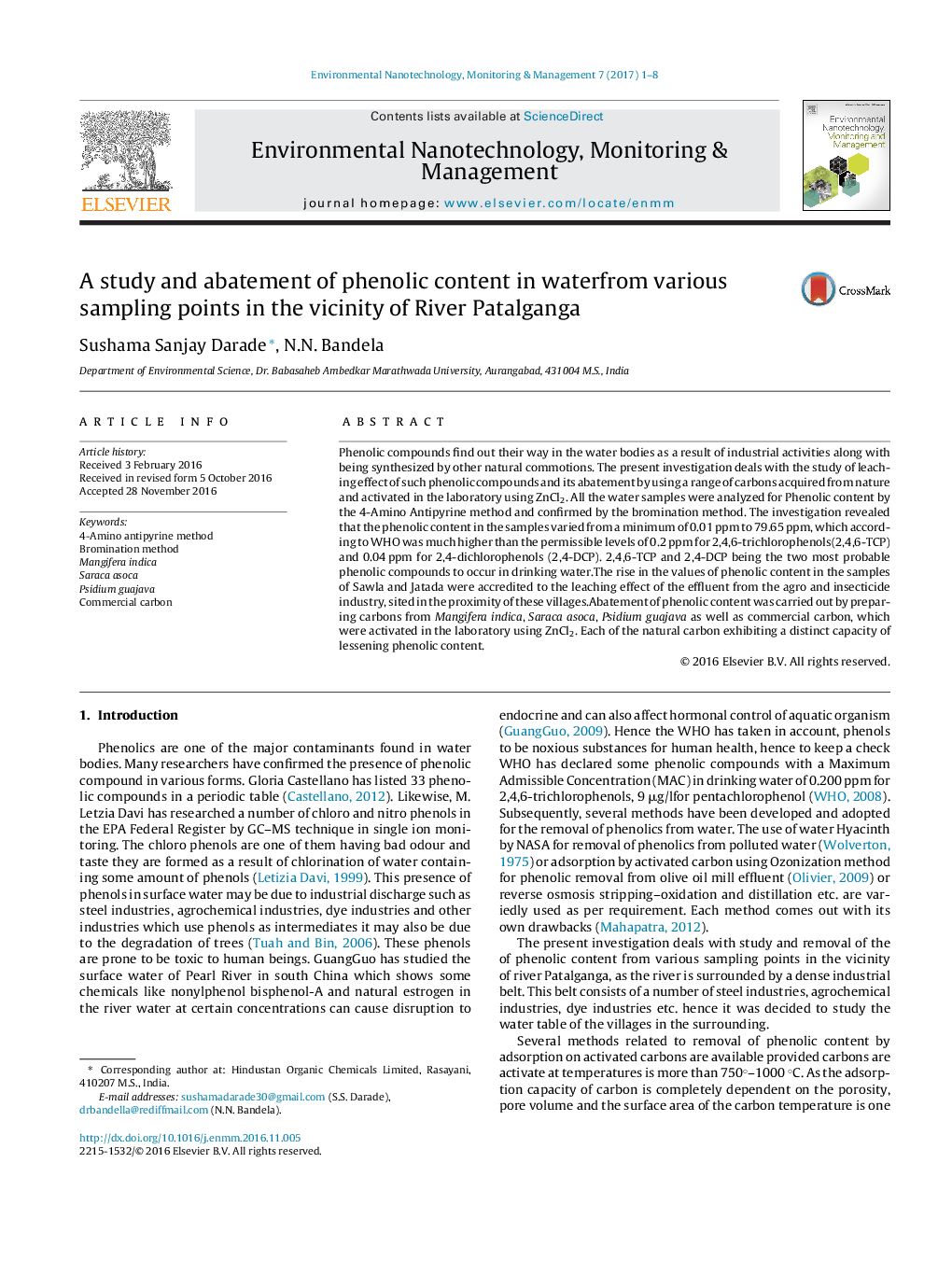| Article ID | Journal | Published Year | Pages | File Type |
|---|---|---|---|---|
| 5748516 | Environmental Nanotechnology, Monitoring & Management | 2017 | 8 Pages |
â¢Study of Phenolic content in the ground water from various sampling points in the vicinity of river Patalganga.â¢Leaching effect of effluents from Agro and Insecticide industries.â¢Abatement of phenolic content using various carbons.
Phenolic compounds find out their way in the water bodies as a result of industrial activities along with being synthesized by other natural commotions. The present investigation deals with the study of leaching effect of such phenolic compounds and its abatement by using a range of carbons acquired from nature and activated in the laboratory using ZnCl2. All the water samples were analyzed for Phenolic content by the 4-Amino Antipyrine method and confirmed by the bromination method. The investigation revealed that the phenolic content in the samples varied from a minimum of 0.01Â ppm to 79.65Â ppm, which according to WHO was much higher than the permissible levels of 0.2Â ppm for 2,4,6-trichlorophenols(2,4,6-TCP) and 0.04Â ppm for 2,4-dichlorophenols (2,4-DCP). 2,4,6-TCP and 2,4-DCP being the two most probable phenolic compounds to occur in drinking water.The rise in the values of phenolic content in the samples of Sawla and Jatada were accredited to the leaching effect of the effluent from the agro and insecticide industry, sited in the proximity of these villages.Abatement of phenolic content was carried out by preparing carbons from Mangifera indica, Saraca asoca, Psidium guajava as well as commercial carbon, which were activated in the laboratory using ZnCl2. Each of the natural carbon exhibiting a distinct capacity of lessening phenolic content.
Graphical abstractDownload high-res image (129KB)Download full-size image
